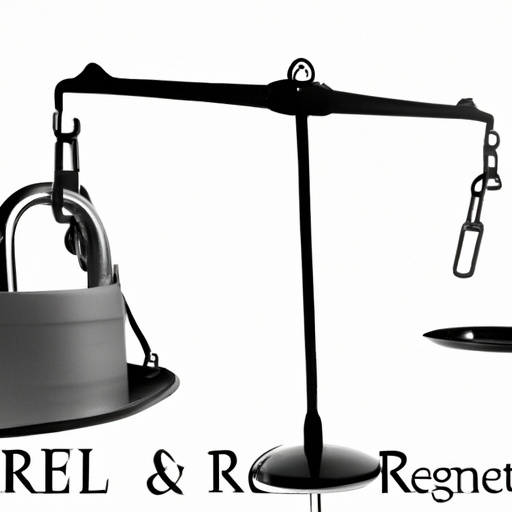In today’s rapidly advancing technological landscape, businesses are increasingly reliant on technology to streamline their operations and maximize productivity. However, with the integration of technology into various aspects of a company, there arises a need for human resources (HR) compliance specifically tailored for technology companies. This article will explore the importance of HR compliance for technology companies, the potential risks they face without proper compliance measures in place, and provide key insights on the steps these companies can take to ensure they meet legal requirements. By understanding the significance of HR compliance and the best practices to achieve it, technology companies can protect their business interests, mitigate risks, and ensure a harmonious and compliant work environment.

Understanding HR Compliance for Technology Companies
In today’s fast-paced and dynamic business environment, HR compliance is of utmost importance for technology companies. HR compliance refers to the adherence to laws, regulations, and best practices in managing human resources within an organization. This includes various aspects such as employment laws, equal opportunity, wage and hour regulations, employee benefits, privacy and data protection, workplace culture, and conflict resolution.
What is HR Compliance?
HR compliance encompasses the policies, procedures, and practices that ensure a company operates within the legal framework governing employee management. It involves staying up-to-date with federal, state, and local laws, regulations, and industry standards to mitigate legal risks and protect the rights and well-being of employees. HR compliance is crucial for technology companies as it helps in preventing legal disputes, maintaining a positive work environment, and attracting and retaining top talent.
Why is HR Compliance Important for Technology Companies?
HR compliance is particularly vital for technology companies due to the nature of their operations and the challenges they face in managing a diverse and highly skilled workforce. Here are some reasons why HR compliance is crucial for technology companies:
-
Legal Compliance: Technology companies are subject to numerous federal, state, and local employment laws and regulations. Failing to comply with these laws can result in severe penalties, fines, and legal liabilities.
-
Retaining Top Talent: In the competitive technology industry, attracting and retaining top talent is essential for success. Complying with HR regulations helps create a positive work environment and fosters employee satisfaction, leading to higher employee retention rates.
-
Mitigating Legal Risks: HR compliance helps minimize legal risks by ensuring fair and unbiased employment practices, preventing workplace discrimination and harassment, and addressing complaints and grievances promptly and appropriately.
-
Protecting Company Reputation: Technology companies rely heavily on their brand reputation and customer trust. Non-compliance with HR regulations can lead to negative publicity, damaging the company’s image and affecting its relationships with clients, partners, and investors.
-
Enhancing Employee Productivity: A compliant HR environment promotes employee confidence and engagement, leading to increased productivity, better performance, and improved overall business outcomes.
Common HR Compliance Challenges in the Technology Industry
The technology industry faces unique HR compliance challenges due to its fast-paced and constantly evolving nature. Some common challenges include:
-
Rapid Expansion: Technology companies often experience rapid growth and may struggle to implement consistent HR policies and practices across multiple locations or departments.
-
Changing Laws and Regulations: Employment laws are continuously evolving, especially in areas such as data privacy and discrimination. Keeping up with these changes can be challenging for technology companies.
-
Employee Classification: Properly classifying employees as exempt or non-exempt under the Fair Labor Standards Act (FLSA) and correctly determining eligibility for overtime pay can be complex in the technology industry.
-
Data Security and Privacy: Protecting employee data and complying with data privacy regulations is critical, especially in technology companies that handle sensitive customer and proprietary information.
-
Diversity and Inclusion: Ensuring diversity and inclusion in the workforce can be a challenge for technology companies that operate in a traditionally male-dominated industry.

Creating an Effective HR Compliance Program
To overcome these challenges and establish a strong HR compliance framework, technology companies should focus on the following key areas:
Establishing HR Policies and Procedures
Clear and comprehensive HR policies and procedures are the foundation of an effective compliance program. These policies should cover areas such as employee conduct, anti-discrimination, harassment prevention, leave management, disciplinary actions, and termination procedures. Regularly reviewing and updating these policies is essential to ensure compliance with changing laws and industry standards.
Ensuring Compliance with Employment Laws
Technology companies must stay up-to-date with federal, state, and local employment laws and regulations. This includes laws related to equal employment opportunity, minimum wage, overtime pay, family and medical leave, and workplace safety. Conducting regular audits to ensure compliance and seeking legal counsel when necessary is crucial.
Managing Employee Records and Documentation
Properly managing and retaining employee records and documentation is essential for HR compliance. This includes maintaining accurate employee files, records of training programs, performance appraisals, disciplinary actions, and any relevant legal documents. Following proper record-keeping practices and ensuring the privacy and security of employee information is crucial.
Implementing Anti-Discrimination and Harassment Policies
Creating a work environment free from discrimination and harassment is critical to HR compliance. Technology companies should have robust anti-discrimination and harassment policies in place, outlining prohibited behaviors, reporting procedures, and consequences for violations. Regular training sessions and awareness programs should be conducted to educate employees and promote a culture of respect and inclusivity.
Developing a Training and Education Program
Regular training and education programs are vital to ensure that employees understand and comply with HR policies and procedures. This includes training on topics such as workplace safety, anti-discrimination and harassment, data privacy, diversity and inclusion, and conflict resolution. Continuous learning and development opportunities help foster a compliant and knowledgeable workforce.
By focusing on these areas, technology companies can establish a strong HR compliance program, mitigate legal risks, and create a positive and inclusive work environment.
Recruitment and Hiring Compliance
Recruitment and hiring practices play a crucial role in HR compliance. Ensuring fairness, transparency, and compliance with relevant laws is essential to attracting and selecting the right talent. Here are some key areas of recruitment and hiring compliance for technology companies:
Complying with Equal Employment Opportunity Laws
Technology companies must adhere to equal employment opportunity laws that prohibit discrimination based on factors such as race, color, religion, sex, national origin, age, disability, and genetic information. Advertisements, job descriptions, interviews, and selection criteria should be designed to ensure fairness and equal opportunity for all applicants.
Conducting Background Checks
Background checks are often conducted to assess a candidate’s qualifications, integrity, and suitability for a position. However, technology companies must comply with the Fair Credit Reporting Act (FCRA) and other applicable laws to ensure that background checks are conducted lawfully and without discrimination.
Ensuring Fair and Unbiased Hiring Practices
To ensure fairness in hiring, technology companies should establish clear and standardized hiring processes. This includes maintaining accurate job descriptions, using objective selection criteria, conducting structured interviews, and providing equal opportunities to all candidates. Avoiding discriminatory practices and unconscious biases is crucial.
Managing Immigration and Work Authorization
For technology companies that hire foreign workers, compliance with immigration laws and regulations is essential. This includes verifying work authorization, completing Form I-9, and ensuring compliance with visa requirements. Working closely with immigration attorneys and staying updated on changes in immigration laws is recommended.
Implementing Effective Onboarding Processes
A structured and comprehensive onboarding process is crucial to comply with HR regulations and set new employees up for success. This includes providing necessary training, reviewing policies and procedures, completing all required paperwork, and ensuring a smooth transition into the company. Proper onboarding helps employees understand their rights, responsibilities, and the culture of the organization.
By adhering to these recruitment and hiring compliance practices, technology companies can attract top talent, avoid legal issues, and build a diverse and skilled workforce.
FAQs:
- What penalties can technology companies face for HR non-compliance?
Technology companies that fail to comply with HR regulations can face various penalties, including fines, legal liabilities, lawsuits, reputational damage, and possible injunctions. The exact penalties depend on the nature and severity of the violation and the applicable laws and regulations.
- How often should technology companies update their HR policies?
Technology companies should regularly review and update their HR policies to ensure compliance with changing laws and industry standards. It is recommended to conduct a comprehensive policy review at least once a year or whenever there are significant changes in the legal environment or company operations.
- Are there any specific laws that technology companies should be aware of?
Technology companies should be aware of a range of employment laws, including but not limited to:
- Equal Employment Opportunity laws (Title VII, ADA, ADEA)
- Fair Labor Standards Act (FLSA)
- Family and Medical Leave Act (FMLA)
- Immigration laws and regulations
- Data privacy laws (such as GDPR and CCPA)
- Affordable Care Act (ACA)
Staying informed about these laws and seeking legal advice when needed is crucial to maintain compliance.
- What steps can technology companies take to prevent workplace harassment?
To prevent workplace harassment, technology companies should:
- Implement clear anti-discrimination and harassment policies.
- Conduct regular training sessions on harassment prevention and reporting.
- Encourage employees to report any incidents or concerns.
- Promptly and thoroughly investigate all complaints.
- Take appropriate disciplinary action against violators.
- Foster a culture of respect, inclusivity, and accountability.
- How can HR compliance help technology companies attract top talent?
HR compliance is essential for attracting top talent to technology companies. A compliant and ethical workplace fosters employee satisfaction, engagement, and loyalty. When technology companies prioritize HR compliance, they demonstrate their commitment to fair employment practices, diversity and inclusion, and employee well-being. This attracts talented individuals who are seeking organizations with strong values and adherence to legal and ethical standards.
By demonstrating a commitment to HR compliance, technology companies can distinguish themselves as employers of choice in a competitive market.



































